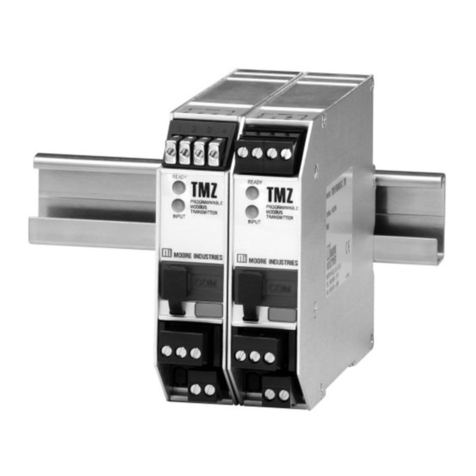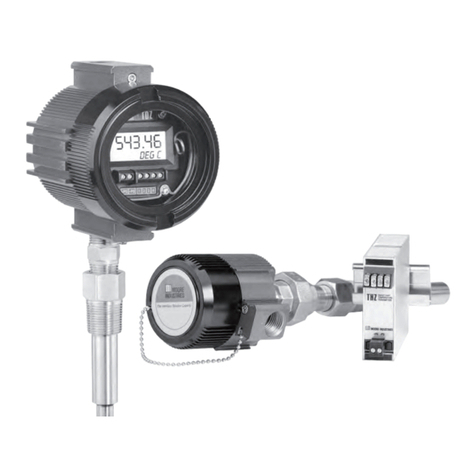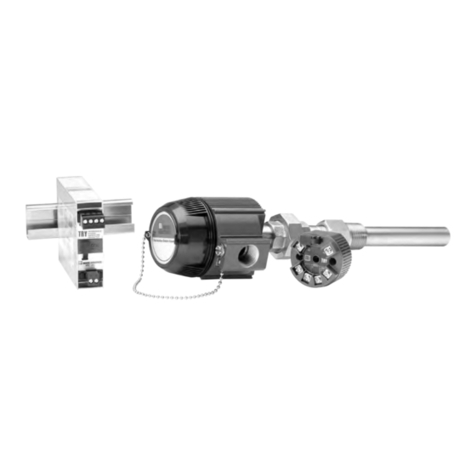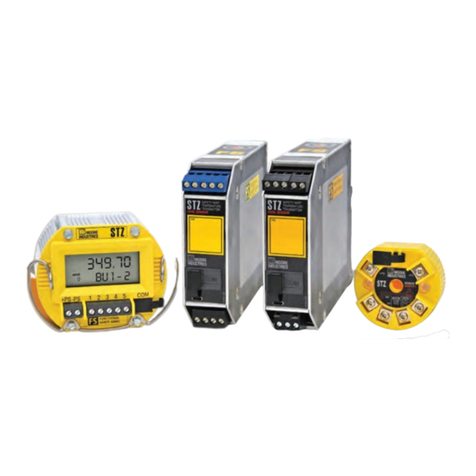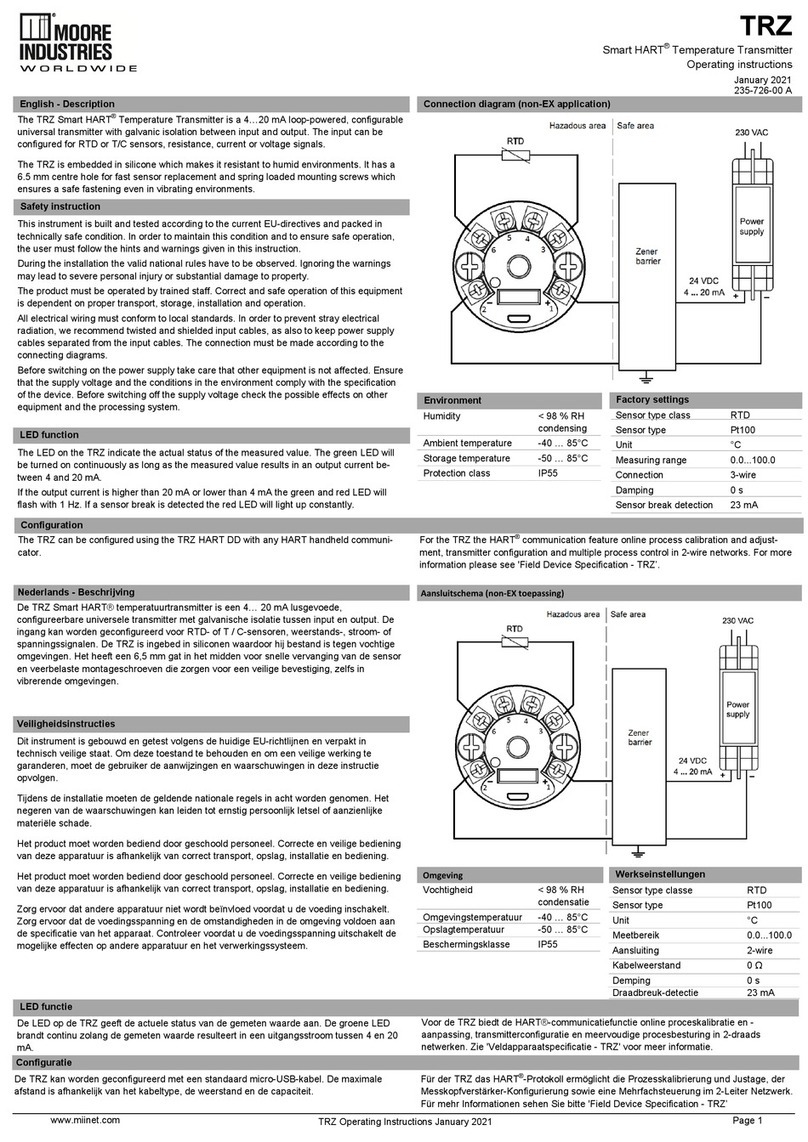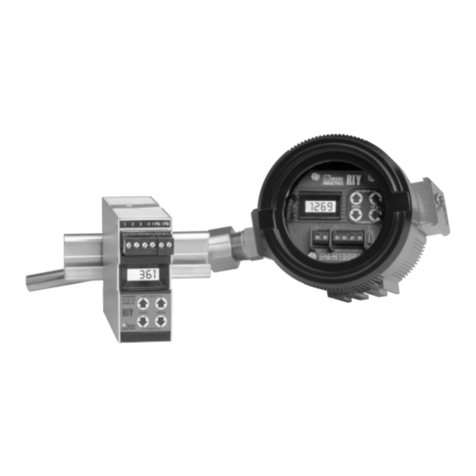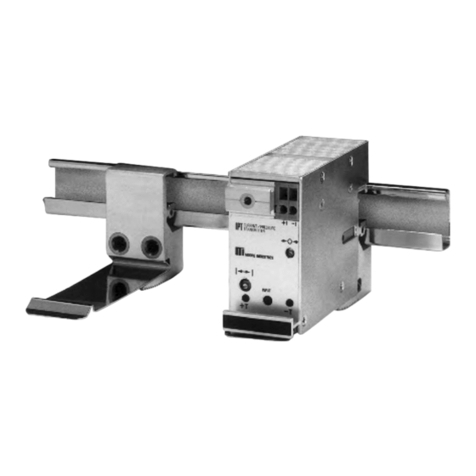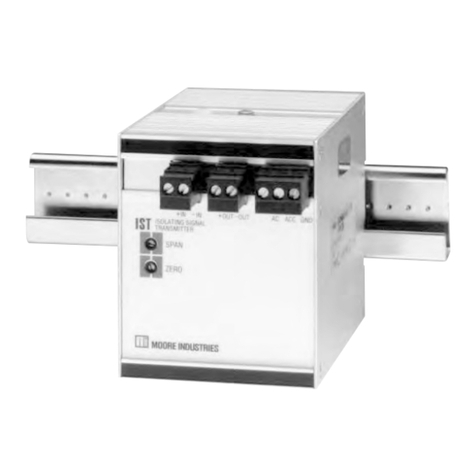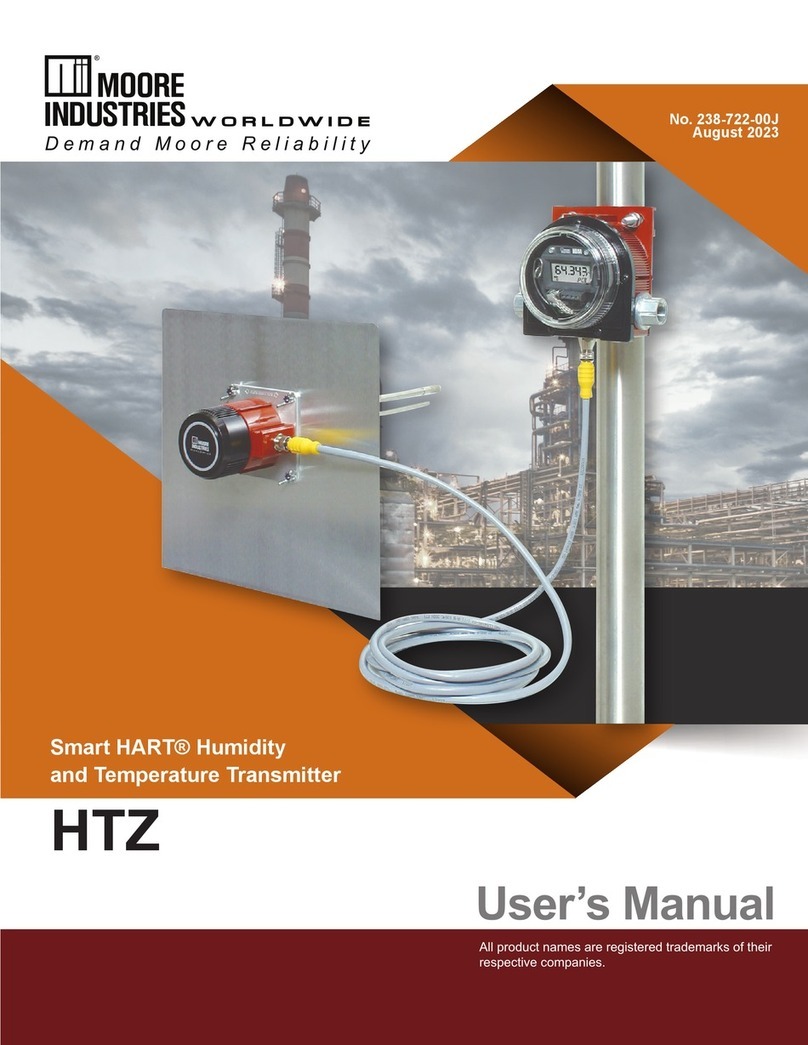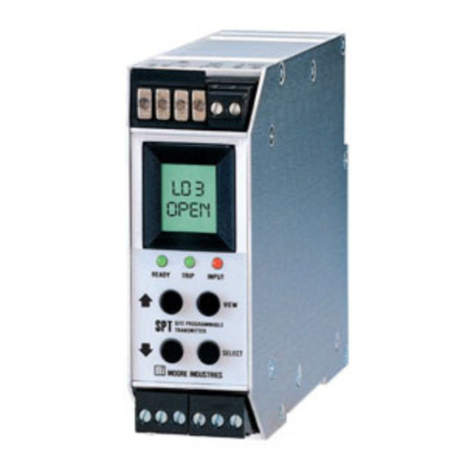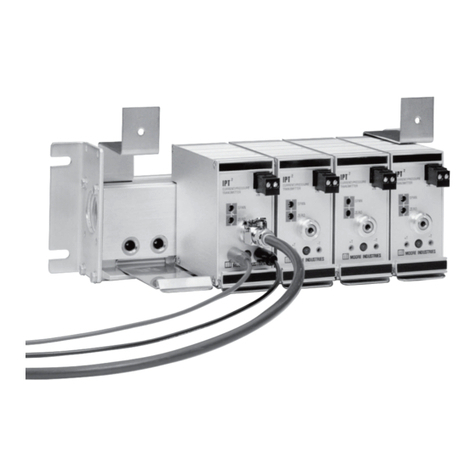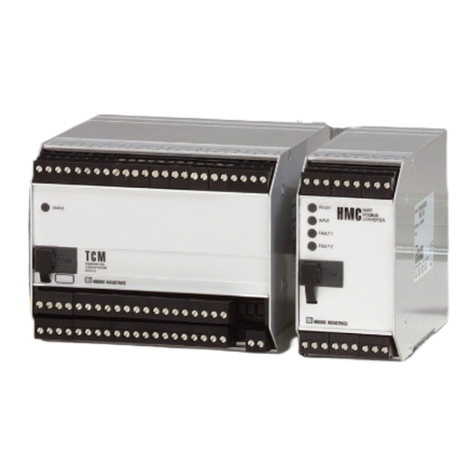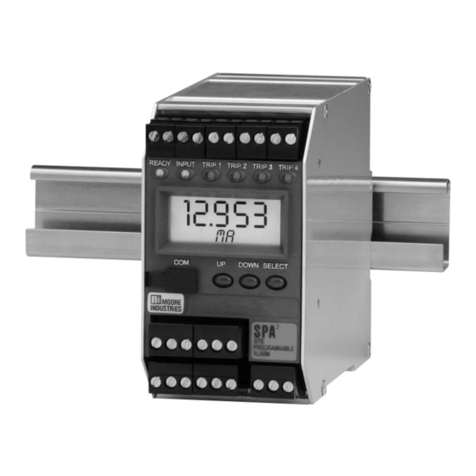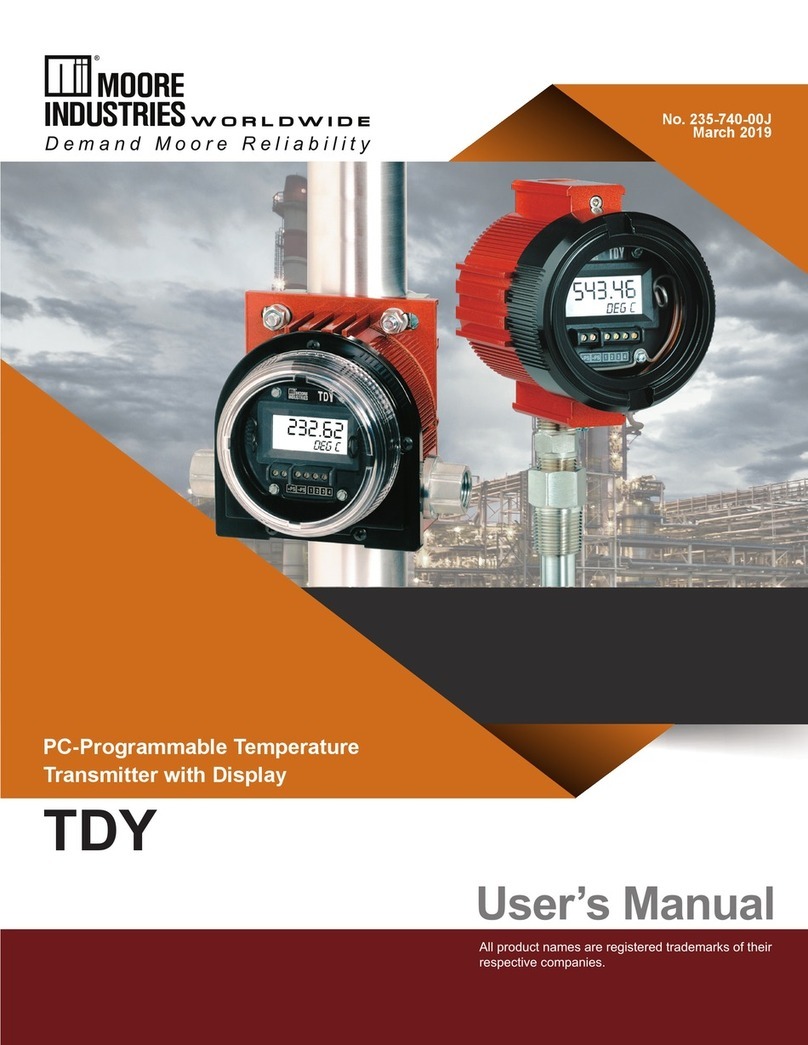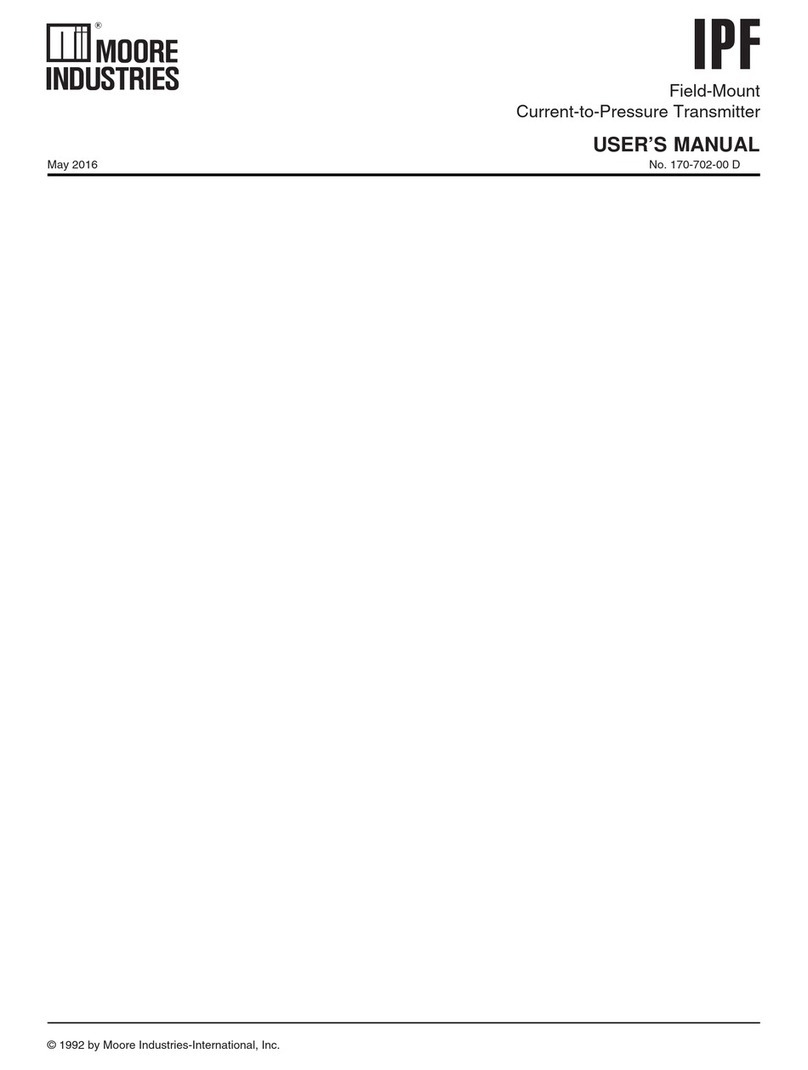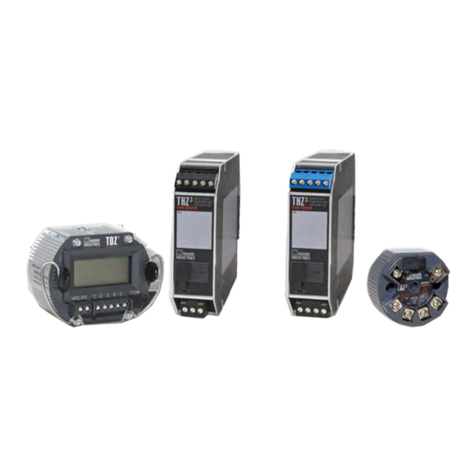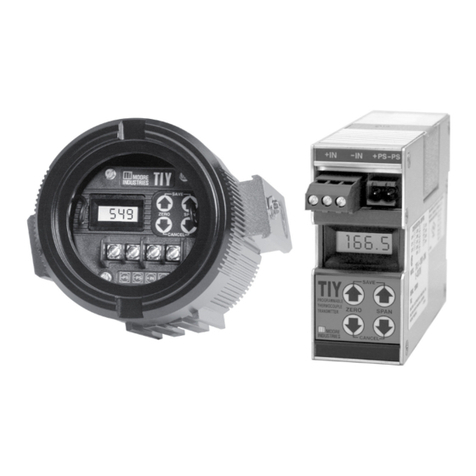
www.miinet.comMoore Industries-International, Inc. - 3 -
User’s Manual
235-781-00D
June 2019 T2X RTD Temperature Transmitter
T2X
Safety Messages
Please read this manual in its entirety. It should answer most of your questions. For personal and system safety, and for
optimum product performance, make sure you thoroughly understand the contents before installing, using, or maintaining
this product. Should you still have questions please visit our web site at www.miinet.com or contact any of our sales/
support oces nearest you.
Your safety and the safety of others is very important. We have provided many important safety messages in this
manual. Please read these messages carefully. These safety messages alert you to potential hazards that could hurt
you or others or render damage to units.
All Moore Industries instrumentation should only be used for the purpose and in the manner described in this manual.
If you use this product in a manner other than that for which it was intended, unpredictable behavior could ensue with
possible hazardous consequences.
Each safety message is associated with a safety alert symbol. These symbols are found in the throughout the manual.
The denition of these symbols is described below:
Pay particular attention wherever you see the following symbols:
Note – Information that is helpful for a procedure, condition or operation
of the unit.
Caution – Hazardous procedure or condition that could damage or
destroy the unit.
Warning – Hazardous procedure or condition that could injure the
operator.
Qualified Personnel
The Moore Industries’ product/systems described in this manual may be operated only by personnel qualied for the
specic task in accordance with the relevant documentation, in particular its warning notices and safety instructions.
Qualied personnel are those who, based on their training and experience, are capable of identifying risks and avoiding
potential hazards when working with these Moore Industries’ products/systems.
Proper use of Moore Industries products
Moore Industries’ products may only be used for the applications described in the catalog and in the relevant technical
documentation. If products and components from other manufacturers are used, these must be recommended or
approved by Moore Industries’ . Proper transport, storage, installation, assembly, commissioning, operation and
maintenance are required to ensure that the products operate safely and without any problems. The permissible ambient
conditions must be complied with. The information in the relevant documentation must be observed.
We have reviewed the contents of this publication to ensure consistency with the hardware and/or software described.
Since variance cannot be precluded entirely, we cannot guarantee full consistency. However, the information in this
publication is reviewed regularly and any necessary corrections are included in subsequent editions. Specications and
information are subject to change without notice.
All product and company names are trademarks™ or registered®trademarks of their respective holders. Use of them
does not imply any aliation with or endorsement by them unless otherwise specied.
